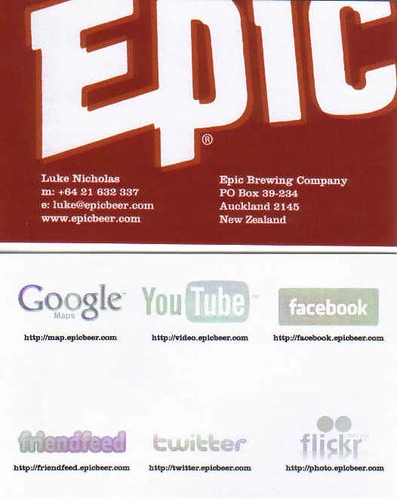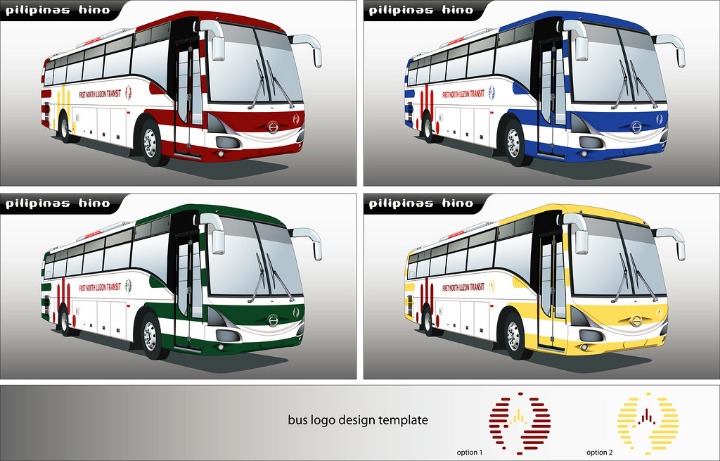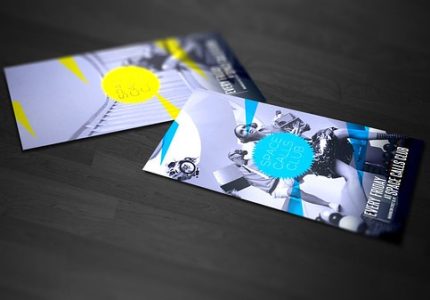Importance of a Logo for a Graphic Design Company
A logo is a vital element for a graphic design company as it serves as the visual representation of the brand’s identity and values. It creates an immediate impression on potential clients and helps establish credibility in a competitive market. A well-designed logo not only enhances brand recognition but also communicates professionalism and creativity, making it an essential tool for a graphic design company’s success.
Brand Identity and Recognition
A logo is a vital element for a graphic design company as it serves as the visual cornerstone of the brand. It encapsulates the company’s identity, values, and creative essence in a single, recognizable symbol. A well-designed logo helps establish a distinct brand presence in a competitive market, making it easier for clients to identify and remember the company.
Brand identity and recognition are significantly enhanced through an effective logo. It acts as the face of the business, conveying professionalism, creativity, and trustworthiness. When consistently used across various platforms and marketing materials, a logo reinforces brand recall and builds a strong emotional connection with the audience. Ultimately, a compelling logo not only differentiates a graphic design company from its competitors but also fosters long-term brand loyalty.

First Impression and Professionalism
A logo is a vital component for a graphic design company as it serves as the first visual impression to potential clients. It reflects the company’s identity, creativity, and professionalism, making it essential for establishing trust and credibility in the industry.
- First Impression: A well-designed logo captures attention, conveys the company’s style, and quickly communicates its capabilities, encouraging clients to explore further.
- Professionalism: A logo demonstrates the company’s commitment to quality and attention to detail, reinforcing its reputation as a reliable and skilled design firm.
Differentiation in the Market
A logo is a crucial element for a graphic design company as it serves as the visual representation of the brand’s identity. It encapsulates the company’s values, creativity, and professionalism in a single, memorable image. A well-designed logo helps attract potential clients and builds brand recognition in a competitive market.

Differentiation in the market is vital for a graphic design company to stand out among numerous competitors. An effective logo not only enhances visibility but also communicates the company’s unique style and strengths. By creating a distinctive logo, a graphic design company can establish a strong brand presence that sets it apart, attracts the right clients, and fosters long-term loyalty.
Key Elements of an Effective Logo
An effective logo is a vital component of a company’s brand identity, especially for a graphic design company. It serves as a visual representation that communicates core values and leaves a lasting impression on clients. Key elements of a successful logo include simplicity, versatility, relevance, uniqueness, and memorability. These features ensure the logo can be easily recognized, adaptable across various mediums, and aligned with the company’s brand message.
Color Palette and Meaning
An effective logo is a crucial element of a company’s branding strategy, serving as a visual representation that communicates the brand’s identity and values. Key elements of a successful logo include simplicity, memorability, versatility, and relevance to the brand’s message. A simple design ensures easy recognition and flexibility across various mediums, while memorability helps customers recall the brand effortlessly. Versatility allows the logo to be adaptable for different sizes and formats, and relevance ensures the design aligns with the company’s industry and target audience.
The color palette of a logo plays a significant role in evoking emotions and conveying the brand’s personality. Colors should be chosen carefully to reflect the desired perception; for example, blue often signifies trust and professionalism, while red can evoke excitement and passion. A balanced color palette enhances visual appeal without overwhelming, and consistent use of colors helps reinforce brand recognition and cohesion across all marketing materials.
The meaning embedded within a logo’s design adds depth and fosters emotional connection with viewers. This can be achieved through symbolic shapes, images, or hidden messages that relate to the company’s mission or core values. A meaningful logo not only stands out visually but also tells a story about the brand, fostering trust and loyalty among its audience. Combining these elements creates a powerful and impactful logo that effectively communicates the brand’s essence in the competitive graphic design landscape.
Typography and Font Choice
An effective logo for a graphic design company should be simple, memorable, and versatile to ensure it stands out across various platforms. It should incorporate clear and distinctive visual elements that reflect the brand’s identity and values, making it easily recognizable to clients and stakeholders.
Typography and font choice play a crucial role in conveying the personality and professionalism of the graphic design company. Selecting a font that aligns with the company’s style—whether modern, classic, playful, or elegant—helps communicate the brand’s message effectively. Consistency in typography enhances brand recognition and ensures cohesiveness across all branding materials.
Iconography and Symbols
An effective logo for a graphic design company should incorporate key elements such as simplicity, relevance, and memorability. A simple design ensures the logo is easily recognizable and versatile across various mediums. Relevance to the company’s identity and values helps establish a strong brand connection. Memorability is crucial for creating a lasting impression that customers can recall effortlessly.
Iconography and symbols play a vital role in conveying the company’s services and personality visually. Well-chosen icons or symbols should be clear, distinctive, and aligned with the industry, whether it’s creative, modern, or traditional. These elements should complement the overall design, enhancing brand recognition without cluttering the logo.
Simplicity and Scalability
An effective logo for a graphic design company is crucial in establishing a memorable and professional brand identity. Two key elements that contribute to a successful logo are simplicity and scalability. Simplicity ensures that the logo is easily recognizable and versatile across various mediums. A simple design avoids clutter, making it more impactful and memorable for viewers. Scalability is equally important, as the logo must maintain its clarity and integrity whether it is displayed on a small business card or a large billboard. A well-designed logo that is scalable ensures consistency and readability in all sizes, helping the brand stay consistent and professional across diverse platforms. Focusing on these elements helps create a strong visual identity that resonates with clients and leaves a lasting impression.
Design Process for a Company Logo
The design process for a company logo is a crucial step in establishing a strong brand identity. It involves understanding the company’s core values, target audience, and industry to create a visual symbol that effectively communicates its message. A well-designed logo not only enhances brand recognition but also sets the tone for the company’s overall visual identity. Through thoughtful planning and creative exploration, designers develop a unique and memorable logo that aligns with the company’s vision and leaves a lasting impression.
Research and Concept Development
Research and concept development are essential stages in designing a logo for a graphic design company, ensuring that the final design accurately reflects the company’s identity and values. During the research phase, designers gather information about the company’s mission, target audience, competitors, and industry trends to understand the context in which the logo will exist. This helps identify unique features and differentiators that should be highlighted visually. In the concept development stage, designers brainstorm ideas, create mood boards, and sketch multiple concepts to explore different visual directions. This iterative process allows for the refinement of ideas, combining symbolism, typography, and color schemes that resonate with the brand’s personality. Ultimately, thorough research and creative exploration lay a solid foundation for developing a compelling and memorable logo that effectively communicates the company’s essence to its audience.
Drafting and Iteration
The design process for a company logo involves multiple stages of drafting and iteration to create a visually compelling and representative symbol. It begins with understanding the company’s brand identity, target audience, and core values to inform initial concept sketches. These early drafts focus on exploring different shapes, typography, and color palettes that align with the brand’s personality. Through ongoing review and feedback, designers refine these concepts, making adjustments to improve clarity, uniqueness, and scalability. This iterative process ensures that each version gets closer to a final design that effectively communicates the company’s essence. Repeated cycles of drafting and testing help identify strengths and weaknesses, leading to a polished and memorable logo that resonates with viewers and supports brand recognition.
Client Feedback and Revisions
The design process for a company logo involves several key stages to ensure the final result aligns with the client’s vision and brand identity. It begins with understanding the client’s goals, target audience, and brand values, which guides the conceptual development. Multiple sketches or digital drafts are then created to explore different ideas and styles. After this, the most promising concepts are refined into more detailed versions, focusing on color, typography, and overall composition.
Client feedback plays a crucial role throughout the process, providing valuable insights and ensuring the design meets expectations. Regular communication allows for adjustments and improvements, making the collaboration effective. Once a preliminary version is approved, final revisions are made to perfect the logo, addressing any remaining concerns or requested changes. The process concludes with the delivery of the polished logo in various formats suitable for different applications.
- Initial consultation to understand client needs and brand identity.
- Concept development through sketches or digital drafts.
- Presentation of initial concepts to gather feedback.
- Refinement of selected designs based on client input.
- Revisions to fine-tune details such as color, typography, and layout.
- Final approval and delivery of logo in multiple formats.
Finalization and Delivery
The finalization and delivery stage of the logo design process is crucial to ensure the client receives a polished and versatile brand asset. This phase involves refining the chosen design, preparing multiple file formats, and establishing guidelines for consistent usage across various platforms.
- Review and refine the selected logo concept based on client feedback, ensuring all adjustments are incorporated effectively.
- Create a comprehensive set of logo files, including vector formats such as AI, EPS, and SVG, as well as raster formats like PNG and JPEG for different applications.
- Develop a style guide or brand manual that details the correct usage, color specifications, typography, and sizing to maintain visual consistency.
- Present the final logo package to the client along with all necessary files and documentation, ensuring clarity on how to implement the logo.
- Obtain formal approval or sign-off from the client before proceeding with delivery.
- Deliver the digital files through a secure method, such as a cloud sharing service or physical media if required, along with any additional branding collateral.
- Follow up with the client to answer any questions and provide support for the initial implementation of the logo.
Trends in Logo Design for Graphic Companies
As the graphic design industry continues to evolve, logo design trends are constantly shifting to reflect modern aesthetics and branding strategies. Graphic companies are increasingly embracing innovative styles, minimalist approaches, and versatile designs to create memorable and impactful logos. Staying up-to-date with these trends is essential for brands to stand out in a competitive marketplace and effectively communicate their identity to their audience.
Minimalism and Flat Design
Trends in logo design for graphic companies have seen a significant shift towards minimalism and flat design, reflecting a broader movement towards simplicity and clarity in visual communication. Minimalism emphasizes clean lines, limited color palettes, and a focus on essential elements, which helps logos resonate more effectively across various medium and sizes. Flat design, characterized by the absence of shadows, gradients, and complex textures, complements this approach by offering a sleek and modern aesthetic that enhances brand recognition. These trends prioritize versatility, scalability, and user engagement, making them popular choices for graphic design companies aiming to create memorable and timeless logos that stand out in a crowded digital landscape.
Versatility Across Platforms
Trends in logo design for graphic companies are increasingly focused on versatility across various platforms. Modern logos need to function seamlessly whether they appear on websites, social media, print materials, or promotional merchandise. This has led to a preference for simplified, minimalist designs that maintain clarity and recognizability at any size. Bold lines, flat color schemes, and adaptable shapes are prevalent to ensure consistency across digital and physical formats. Additionally, responsive logo design, which allows logos to adjust proportionally to different screen sizes and resolutions, is gaining popularity as part of a broader trend toward adaptability and user-centric branding. Ultimately, the emphasis on versatility helps graphic companies create strong, cohesive brand identities that resonate across all touchpoints.
Use of Negative Space
Trends in logo design for graphic companies are increasingly embracing innovative techniques to create memorable and impactful branding. One prominent trend is the strategic use of negative space, which allows designers to craft clever and hidden images within the logo, adding a layer of depth and intrigue. This approach not only enhances visual interest but also communicates complex ideas in a minimalistic way, making logos more versatile and recognizable across various media. As brands seek to stand out in a crowded marketplace, the use of negative space combined with modern design elements helps create unique identities that are both aesthetically pleasing and meaningful.
Customized and Unique Typography
Trends in logo design for graphic companies are increasingly focused on creating customized and unique typography that helps brands stand out in a crowded marketplace. Modern logo designs favor bespoke fonts that are tailored to reflect the company’s identity, ensuring a distinctive visual presence. Experimenting with custom lettering allows designers to incorporate personality, creativity, and originality into logos, making them memorable and easily recognizable. Additionally, these trends emphasize simplicity and versatility, enabling logos to adapt across various platforms and sizes. As branding becomes more personalized, graphic companies are investing in crafting exclusive typographies that communicate a company’s values and uniqueness effectively.
Choosing the Right Logo for Your Company
Choosing the right logo for your company is a crucial step in establishing a strong brand identity. A well-designed logo not only captures the essence of your business but also leaves a lasting impression on your audience. For a graphic design company, selecting a logo that showcases creativity, professionalism, and uniqueness can set you apart from competitors and attract potential clients.
Alignment with Brand Values
Choosing the right logo for your graphic design company is crucial in establishing a strong visual identity. A well-designed logo should reflect the core values and personality of your brand, creating an immediate connection with your target audience. When selecting a logo, consider how its colors, shapes, and typography align with what your company stands for and the message you want to convey.
Alignment with brand values ensures consistency across all branding materials, fostering trust and recognition. For a graphic design company, your logo should showcase creativity, professionalism, and innovation, mirroring your expertise in visual communication. By aligning your logo with your brand values, you reinforce your company’s identity and differentiate yourself in a competitive market.
Target Audience Considerations
Choosing the right logo for your company is a critical step in establishing a strong brand identity, especially for a graphic design company aiming to showcase creativity and professionalism. When considering your target audience, it is essential to tailor your logo design to resonate with their preferences, values, and expectations. Understanding who your ideal clients are allows you to select colors, typography, and symbols that appeal specifically to them, whether they are startups, enterprises, or individual creatives. A well-designed logo that aligns with your target audience helps build trust and recognition, ultimately supporting your company’s growth and reputation in the competitive graphic design industry.
Longevity and Timelessness
When selecting a logo for your graphic design company, prioritizing longevity and timelessness is essential to ensure lasting brand recognition. A well-crafted logo should transcend fleeting trends and remain relevant for years to come, reflecting the core values and vision of your business. Simple, clean designs with classic elements tend to age better and are more versatile across various mediums. By focusing on timeless aesthetics, your logo will continue to resonate with your audience, fostering trust and consistency in your brand identity over time. Investing in a design that stands the test of time ultimately supports sustained growth and establishes a strong market presence.
Budget and Resources
Choosing the right logo for your company involves careful consideration of your budget and available resources. A well-designed logo is essential for establishing your brand identity and making a lasting impression on your audience. If you have a limited budget, you might opt for a professional freelance designer or use online logo design tools to create a simple yet effective logo. For those with more resources, investing in a branding agency or hiring a dedicated graphic designer can ensure a unique and highly customized logo. It’s important to balance quality and cost, prioritizing a design that accurately represents your company’s values while remaining within your financial means. Remember, a memorable logo can significantly impact your brand recognition and success in the marketplace.
Case Studies of Successful Logo Designs
Logo design plays a crucial role in establishing a company’s identity and making a memorable impression on its audience. In the realm of graphic design, successful logos are often celebrated for their creativity, simplicity, and ability to communicate a brand’s core values effectively. This article explores several case studies of logo designs that have achieved remarkable success, highlighting the strategies and design principles behind some of the most iconic and influential brand identities.
Industry Leaders in Graphic Design
Case studies of successful logo designs reveal how top graphic design industry leaders have crafted iconic symbols that resonate deeply with audiences. Companies like Apple, Nike, and Coca-Cola have invested heavily in their logo development, creating visual identities that stand the test of time. Apple’s minimalist apple symbol exemplifies simplicity and innovation, making it instantly recognizable worldwide. Nike’s swoosh embodies movement and athleticism, conveying energy and progress. Coca-Cola’s flowing script connects emotionally through tradition and familiarity. These examples highlight the importance of strategic creativity, brand consistency, and understanding target audiences in developing a memorable logo. Industry leaders in graphic design leverage storytelling, unique color palettes, and versatile design elements to ensure their logos effectively communicate brand values and foster loyalty. Their success stories serve as valuable lessons for aspiring designers aiming to create impactful and enduring visual identities.
Before and After Transformation
Examining successful logo designs reveals powerful transformations that significantly boost brand recognition. One notable example is the logo redesign of a well-known tech company, where a modern and minimalistic approach replaced a cluttered and outdated emblem. The before version featured complex imagery and a busy font, which hindered scalability and brand consistency. The after version embraced simplicity with clean lines and a sleek font, resulting in a more versatile and memorable identity. Similarly, a renowned fashion brand revamped its logo from ornate script to a bold, geometric mark, aligning with contemporary design trends and enhancing visual impact. These case studies demonstrate how strategic logo overhauls can refresh brand image, foster customer loyalty, and pave the way for future growth in a competitive market.
Unique Branding Elements
Successful logo designs are pivotal for establishing a memorable brand identity, especially within the competitive landscape of graphic design companies. Case studies of renowned logos highlight the importance of simplicity, relevance, and versatility in creating a lasting impression. For instance, the FedEx logo utilizes a hidden arrow to symbolize speed and precision, effectively conveying core brand values through a clean, minimal design. Similarly, the Nike swoosh exemplifies how a simple, fluid shape can become an iconic symbol recognized globally, representing movement and athletic excellence.
Unique branding elements often distinguish a graphic design company’s logo from competitors. These elements include custom typography, innovative color palettes, and distinctive graphic motifs that reflect the company’s creative ethos. The Airbnb logo, with its distinctive “Bélo” symbol, exemplifies a unified approach to branding by promoting concepts of belonging and community through a simple, yet meaningful graphic mark. Additionally, brands like Google reinvent their logo periodically, maintaining brand freshness while preserving core visual elements that foster recognition.
Overall, successful logo case studies demonstrate that effective branding combines thoughtful design, cultural relevance, and adaptability. Incorporating these elements ensures that a graphic design company’s logo not only captures attention but also communicates the company’s values, fostering long-term brand loyalty.





